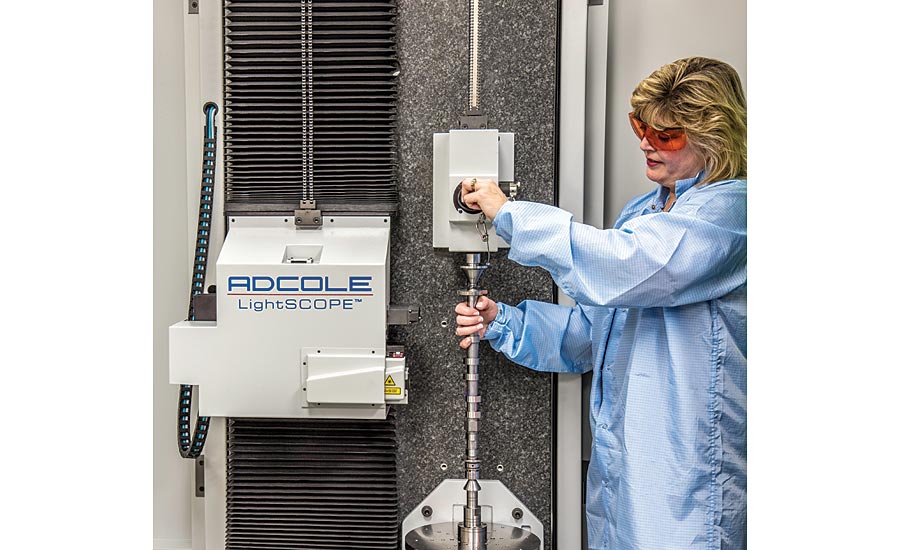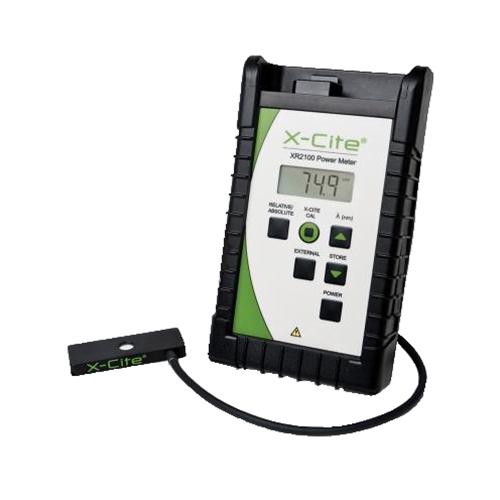Answers to common questions about optical measurement system adoption
Answers to common questions about optical measurement system adoption
Blog Article
The Role of Optical Measurement Equipments in Progressing Metrology Techniques
Optical measurement systems have changed width, bringing a degree of precision that was as soon as unthinkable. As you explore better, you'll find just how these systems are shaping the future of dimension and quality control.
The Advancement of Assessment: A Historic Perspective
As you discover the history of metrology, you'll discover that its advancement reflects humankind's quest for precision and standardization. From old people using body components as devices of measurement to the development of standard weights and steps, each step reveals our desire for precision. The Egyptians developed the pyramids making use of accurate dimensions, while the Romans progressed design with their sophisticated measuring tools.
Throughout the Renaissance, clinical breakthroughs moved the emphasis towards a lot more empirical approaches, leading the way for modern-day metrology. The introduction of the statistics system in the late 18th century noted a significant landmark, developing global requirements. Throughout the 20th century, technical advancements further changed assessment, enabling extremely exact dimensions in numerous areas.
Today, metrology continues to progress, integrating digital innovation and automation. This background highlights not just the value of dimension but likewise our ruthless pursuit of improving accuracy and consistency in our increasingly complicated world.
Principles of Optical Measurement Solutions
Comprehending the concepts behind optical measurement systems is essential for precise results in assessment. You'll intend to take right into account essential optical principles, measurement precision variables, and reliable system calibration strategies. Each of these aspects plays an essential role in guaranteeing your measurements are dependable and precise.
Fundamental Optical Concepts
While checking out optical dimension systems, you'll come across basic optical principles that create the foundation of accurate information procurement. Light behaves in predictable means, and comprehending these habits-- like refraction, diffraction, and representation-- is vital for effective dimensions. You'll use lenses and mirrors to control light and concentrate it onto your target, making sure accuracy in your analyses. Furthermore, the wave nature of light allows for disturbance patterns, which can boost dimension resolution. Polarization can likewise play a key duty in distinct signal from sound, improving the quality of your results. By understanding these concepts, you'll be furnished to leverage optical innovations effectively, leading the way for innovations in assessment and guaranteeing your measurements are both repeatable and trustworthy.
Dimension Accuracy Factors
To accomplish high dimension accuracy in optical systems, numerous variables come right into play, affecting the dependability of your results. High-quality lenses and detectors reduce aberrations and noise, guaranteeing your measurements are precise. By addressing these variables, you can boost the general efficiency of your optical dimension systems, leading to even more accurate and reputable outcomes in your assessment applications.
System Calibration Techniques
Accomplishing high dimension accuracy is only component of the equation; proper system calibration strategies are just as essential in optical dimension systems. Next off, use well-known dimensions to verify the system's output and make required adjustments. With these techniques, you'll boost the integrity of your optical dimension system.
Trick Technologies Behind Optical Measurement
Optical measurement systems rely upon several key technologies that enhance accuracy and performance in assessment. One crucial innovation is interferometry, which utilizes the interference of light waves to gauge little variations and surface area abnormalities with extreme accuracy. You'll likewise locate laser scanning systems, which catch comprehensive 3D information of things promptly, making them invaluable for dimensional evaluation.
Furthermore, CCD and CMOS sensors play a significant role in converting light into electrical signals, permitting for high-resolution imaging and specific measurements. Advanced algorithms for picture handling additionally improve dimension precision by examining data in actual time, straining noise and enhancing attributes.
Finally, optical fiber supply versatility and the ability to determine in difficult settings while keeping signal integrity. By leveraging these modern technologies, you can achieve premium lead to your metrology jobs, guaranteeing that your dimensions are both trustworthy and precise.
Applications of Optical Dimension in Sector
As sectors increasingly require precision and performance, the applications of optical measurement systems have come to be crucial across different fields. In manufacturing, these systems assist you keep track of measurements and resistances in real-time, ensuring top quality control without lengthy hand-operated checks. In the automotive market, optical dimensions aid in lining up parts with accuracy, boosting security and efficiency.
In electronics, you're making use of optical methods to examine min features on circuit boards, identifying problems that might cause failings. The aerospace sector take advantage of non-destructive screening strategies, permitting you to assess materials and elements without jeopardizing their stability.
Optical measurement likewise plays a vital duty in fabrics, making certain material measurements satisfy precise specs. optical measurement systems. With their capability to offer high-resolution data rapidly, these systems equip you to make enlightened choices, enhance procedures, and inevitably drive innovation throughout your market
Enhancing Accuracy and Efficiency in Measurements
When you think of enhancing accuracy in dimensions, accuracy in your dimension strategies is crucial. By simplifying these procedures, you can attain quicker outcomes without compromising high quality. Let's discover how adopting innovative optical dimension systems can elevate both accuracy and efficiency in your job.
Accuracy in Measurement Methods
Precision in dimension strategies is important for accomplishing trusted results in width, specifically since small inconsistencies can lead to substantial errors. By utilizing sophisticated optical measurement systems, you can improve the accuracy of your measurements. In addition, exact measurements enable you to preserve high quality control, making sure that items satisfy stringent specifications.
Streamlining Measurement Procedures
To boost precision and performance in dimensions, simplifying your measurement procedures is essential. Beginning by adopting optical measurement systems that offer real-time data, reducing the time invested in manual recording. These systems usually integrate flawlessly with existing software program, permitting you to automate information collection and evaluation.
Following, systematize your measurement protocols. By applying regular procedures, you minimize variability and boost repeatability. Do not forget to on a regular basis adjust your devices to guarantee its accuracy.

The Impact of Optical Measurement on R & D
As scientists venture to push the limits of innovation, optical dimension systems have actually come to be vital devices in the advancement process. These systems supply you with exact, real-time information that enhances your capability to analyze intricate materials and structures. In various areas, from biotechnology click to find out more to aerospace, you rely upon optical dimensions to boost and enhance styles product efficiency.

With high-resolution imaging and non-contact approaches, you can reduce sample disruption, permitting more accurate results. This capacity to capture minute details increases your R&D cycle, letting you iterate designs promptly and efficiently. Moreover, optical dimension cultivates partnership throughout disciplines, as the data produced is typically easily interpretable and shareable.
Eventually, incorporating optical measurement systems into your research study not just boosts productivity yet likewise grows your understanding of the phenomena you study. By leveraging these sophisticated strategies, you're far better furnished to innovate and remain in advance in an affordable landscape.
Future Fads in Optical Measurement Systems
With the quick improvement of innovation, you're likely to see significant shifts in optical dimension systems that will certainly redefine their application throughout different markets. You'll discover an approach raised automation and integration of man-made knowledge, enabling real-time data analysis and enhanced precision. Miniaturization is another pattern; small gadgets will make it possible for dimensions in tighter spaces, making them suitable for areas like aerospace and biomedical applications.
Moreover, the arrival of advanced materials, such as photonic crystals, will certainly enhance sensitivity and resolution. Expect to see systems that can operate in difficult settings, supplying reliable dimensions in severe problems. Cloud-based analytics will certainly additionally play an essential duty, supplying you accessibility to large datasets for far better decision-making. As these innovations converge, you'll discover that optical dimension systems not only improve precision but additionally improve operations, inevitably driving innovation and efficiency in your jobs.
Frequently Asked Concerns
Exactly How Do Optical Measurement Solutions Compare to Standard Dimension Techniques?
Optical dimension systems use greater accuracy and faster outcomes contrasted to conventional strategies. You'll locate they record even more information points precisely, minimizing human mistake and boosting dependability, making them a preferred option in different applications.
What Industries Benefit Many From Optical Measurement Systems?
You'll discover industries like aerospace, automotive, and electronic devices profit most from optical dimension systems. These fields rely upon exact measurements to guarantee quality and efficiency, boosting effectiveness and reducing costs via sophisticated innovation.

Are Optical Measurement Systems Expensive to Apply?
Optical measurement systems can be pricey to carry out, however their precision and effectiveness typically warrant the cost. Spending in such innovation can bring about considerable long-lasting savings and renovations in quality throughout different applications.
What Abilities Are Needed to Run Optical Measurement Equipments?
To run optical dimension systems, you'll need solid analytical skills, focus to detail, and proficiency in software application devices. Familiarity with optics and an understanding of measurement principles will likewise boost your effectiveness and effectiveness.
Just How Do Environmental Variables Affect Optical Measurements?
Environmental variables like temperature, moisture, and air high quality can misshape optical measurements. You'll more helpful hints see variations in accuracy due to light disturbance or refraction. optical measurement system. Preserving secure problems is important for reputable and accurate optical dimension results
Conclusion
In summary, optical dimension systems are transforming width by supplying unequaled accuracy and effectiveness. As you explore future trends, you'll see exactly how the integration of AI and automation will proceed to raise dimension practices, driving advancement and enhancing high quality control.
Achieving high measurement accuracy is just component of the equation; appropriate system calibration methods are just as important in optical measurement systems.When you assume concerning improving accuracy in dimensions, accuracy in your dimension methods is necessary. By using advanced optical dimension systems, you can enhance the accuracy of your dimensions.To improve accuracy and performance see page in dimensions, simplifying your measurement procedures is crucial. How Do Optical Measurement Solutions Compare to Conventional Measurement Techniques?
Report this page